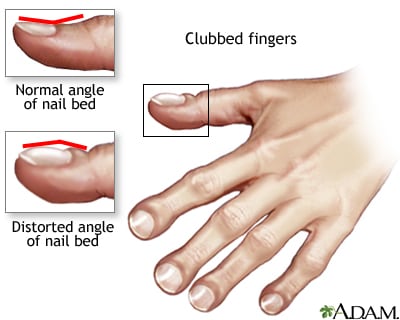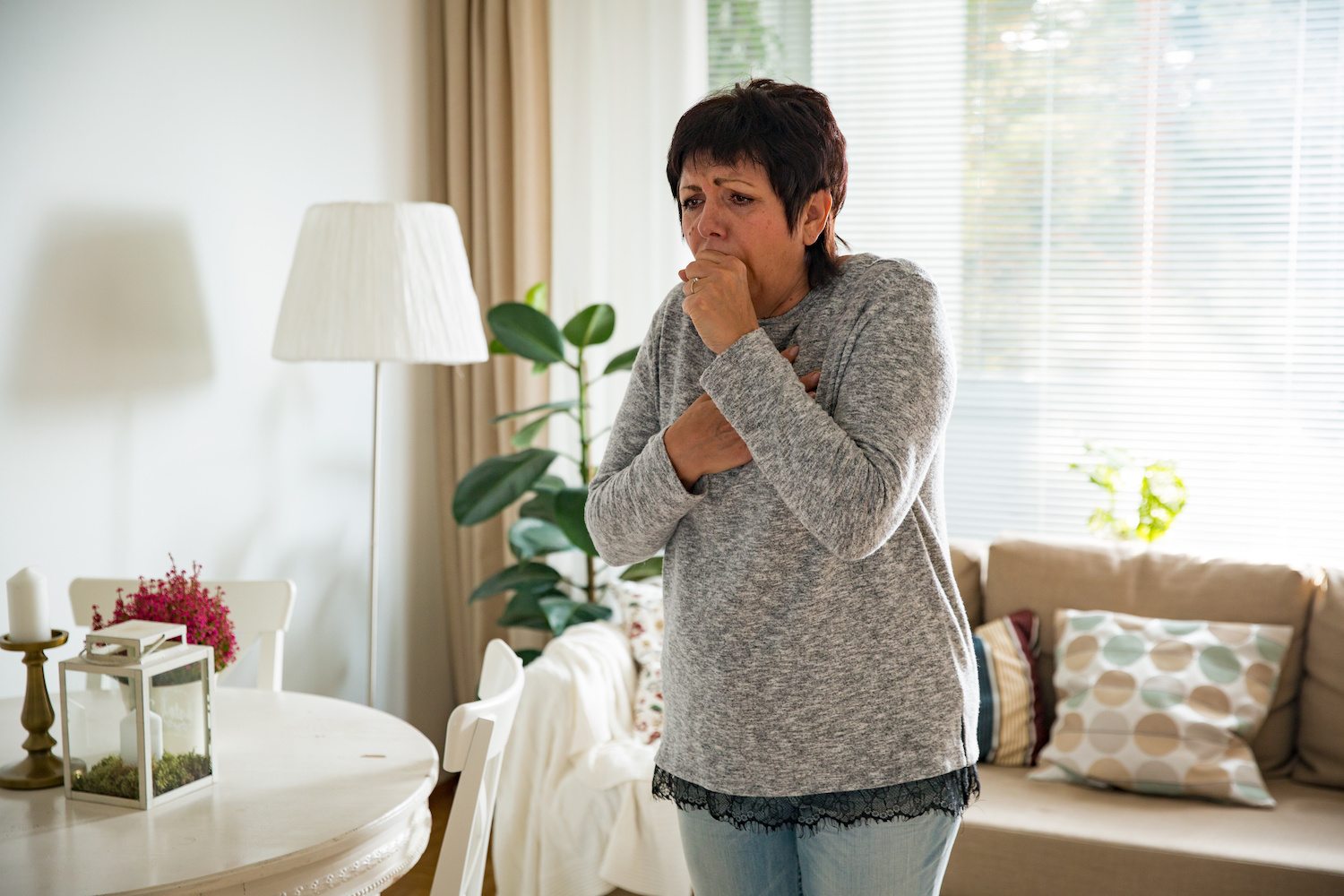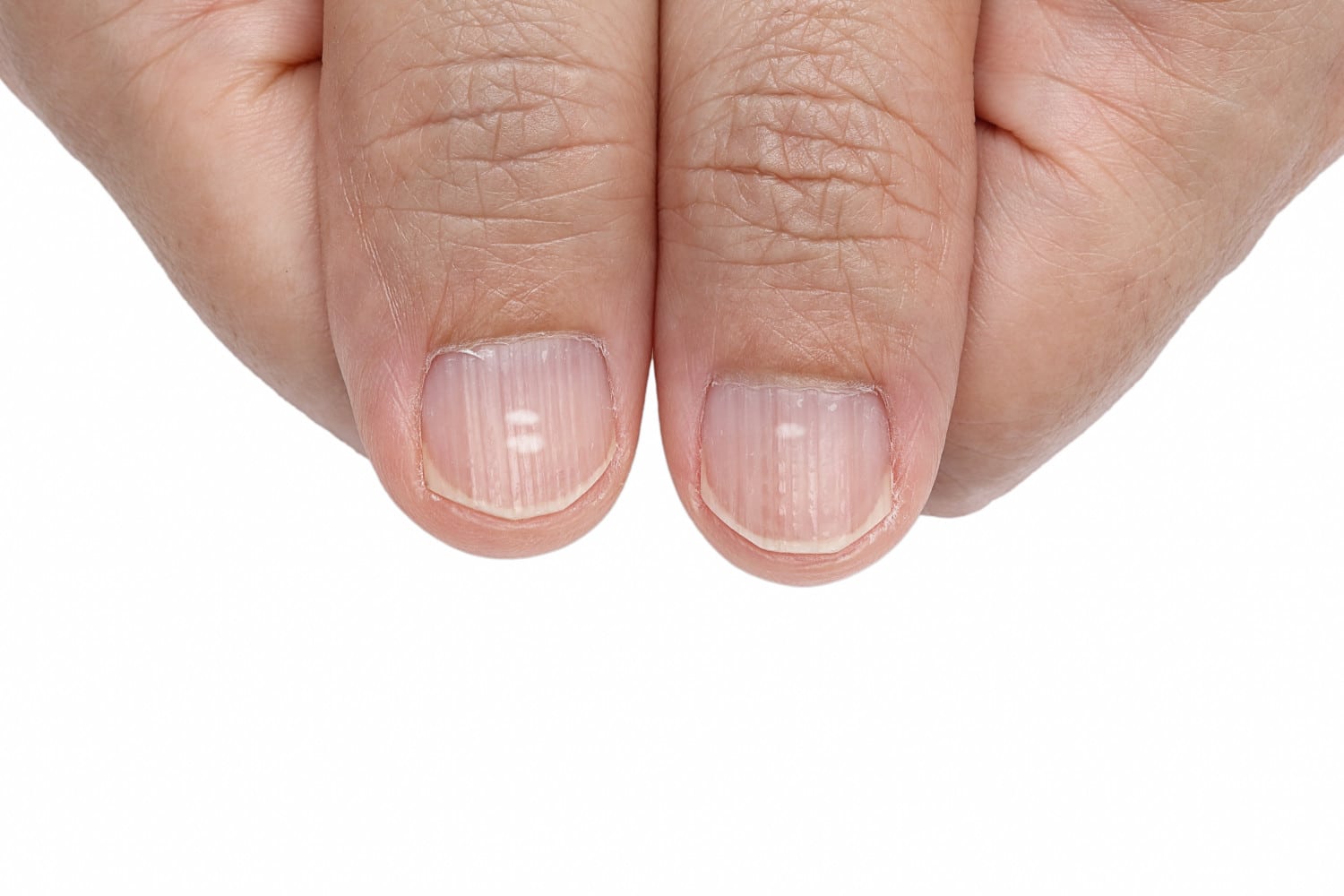Developing a new and persistent cough, as well as wheezing or coughing up bloody phlegm are all significant symptoms that could signal problems with your lung health and potentially be early signs of lung cancer. But, did you know that a particular change in fingernail growth could also be a serious SOS from your lungs and another possible sign of cancer?
When Jean Williams Taylor, from England, posted a photo on Facebook in 2018 that showed her fingernails had grown in a curved, downward angle, a commenter urged her to go see a doctor. She took the advice and, following a series of tests, X-rays, scans and a biopsy, Taylor said she was was diagnosed with cancer in both lungs.
In an effort to raise awareness, she posted about her diagnosis on Facebook, saying: “When your nails curve, its (sic) often linked to heart and lung disease and its official term is ‘clubbing.’ I had no idea … Did you?”
Here’s her full post and a photo of her own nail:
Medical experts say that lung cancer is, in fact, the most common cause of fingernail clubbing. The nail deformity often occurs in people suffering from heart and lung diseases that reduce the amount of oxygen in the blood. It can be a warning sign of a serious problem, doctors say.
Unfortunately, Taylor would die less than a year after writing her viral post, at the age of 53, but she was widely credited with raising awareness about the rare symptom.
Here’s what else you should know about clubbing, and how your fingernails can provide a window into your health.
What Is Nail Clubbing?
Clubbing is a curving of the nail and a softening of the nail bed, according to Dr. Norman Edelman, senior scientific adviser to the American Lung Association.
“We don’t quite know precisely what causes it,” he said. “It tends to be associated with low oxygen in the blood.”
Clubbing, he said, could also be caused by shunting of venous blood within the lungs.
“We suspect that these conditions release a substance in the blood, which dilates certain blood vessels,” Edelman said.
When the nail bed softens during the clubbing process, it can seem as though nails are floating rather than being firmly attached. The nails then form a sharper angle. The last part of the finger may appear large or bulging, and it could potentially be warm and red, according to the National Institutes of Health. When nails are clubbed, they grow downward, and they look like the round part of an upside-down spoon.
Here is an illustration from Medline Plus, which is a resource website from the National Institutes of Health, that displays clubbed fingernails:

Nail clubbing can occur in a variety of lung conditions and other diseases, Edelman said, including severe cases of chronic obstructive pulmonary disease (COPD), pulmonary fibrosis, congenital heart disease and some bowel diseases.
There are also benign reasons that could cause nail clubbing: A congenital form runs in some families, for example, and has no medical significance, Edelman said.
Other Signs Of Lung Cancer
In most cases, signs of lung cancer occur late in the course of the disease, according to Edelman.
“That’s why CAT scan screening is so important,” he said.
Some people with early lung cancer do have symptoms, so medical professionals say you should see a doctor when you first notice symptoms, because cancer might be diagnosed at an earlier stage, when treatment is more effective.
According to the American Lung Association, some common, early symptoms of lung cancer are:
- A cough that does not go away or gets worse
- Coughing up blood or rust-colored spit or phlegm
- Chest pain that is often worse with deep breathing, coughing or laughing
- Hoarseness
- Weight loss and loss of appetite
- Shortness of breath
- Feeling tired or weak
- Infections such as bronchitis and pneumonia that don’t go away or keep coming back
- New onset of wheezing

Because the signs can be so evasive, the American Cancer Society recommends that doctors should discuss screenings with people who are high risk. That includes patients who are age 55 to 74 and have a smoking history equivalent to a pack a day for 30 years, and haven’t quit more than 15 years ago.
In 2018, scientists at Vanderbilt University Medical Center published a study that showed risk of lung cancer drops substantially within five years of quitting smoking. However, there was some bad news: Just because you stopped smoking years ago doesn’t mean your risk for lung cancer is wiped out.

Five years after quitting, the risk of developing lung cancer in former heavy smokers dropped by 39 percent compared to current smokers. The risk continued to fall as time went on. Yet, even 25 years after quitting, the lung-cancer risk of former heavy smokers remained more than threefold higher compared to those who had never smoked.
The conclusion? The importance of quitting smoking is certainly important, said study author Dr. Matthew Freidberg, a professor of medicine at Vanderbilt.“Former heavy smokers also need to realize that the risk of lung cancer remains elevated for decades after they smoke their last cigarettes,” he said, adding that’s why it’s so important to be screened for lung cancer.
What Else Can Our Fingernails Tell Us?
Curious what else your nail growth can tell you about your overall health? Quite a lot, actually.
For example, white spots on the nails can be due to vitamin deficiencies or can develop due to drug use.

The Mayo Clinic, which is a nonprofit academic medical center based in Minnesota, has put together a slideshow of nail problems that shouldn’t be ignored.
“Spoon nails,” with depressions in the center, could be a sign of iron deficiencies or hemochromatosis, a liver condition in which your body is absorbing too much iron from the foods you eat. This nail deformity could also be a sign of heart disease or hypothyroidism.
When nails appear white except for a narrow pink band at the tip, it’s known as Terry’s nails, according to the Mayo Clinic. This can be attributed simply to aging but could also mean liver disease, kidney failure, diabetes or congestive heart failure.
The takeaway here? Changes in your fingernails shouldn’t be overlooked and are certainly worth discussing with your healthcare provider.
This story originally appeared on Simplemost. Check out Simplemost for additional stories.


